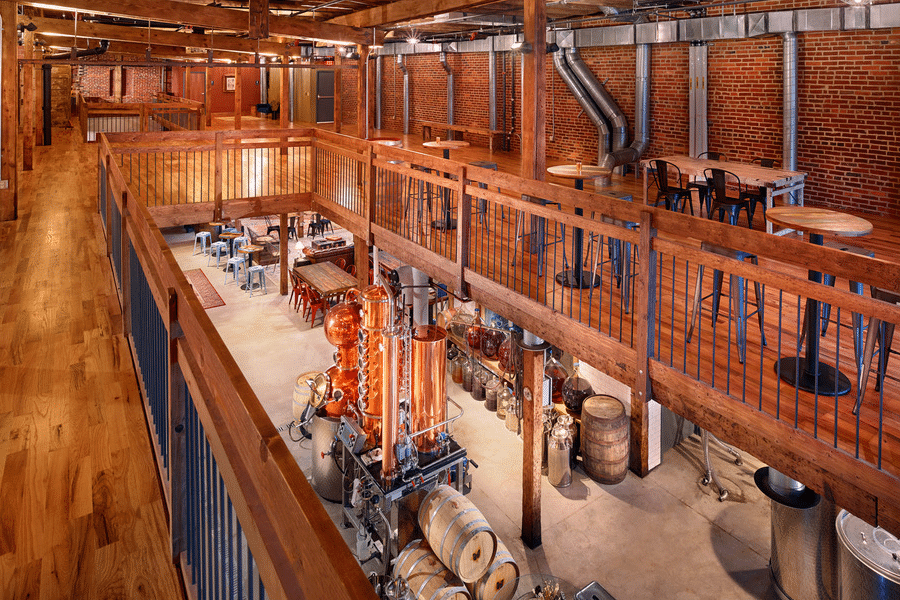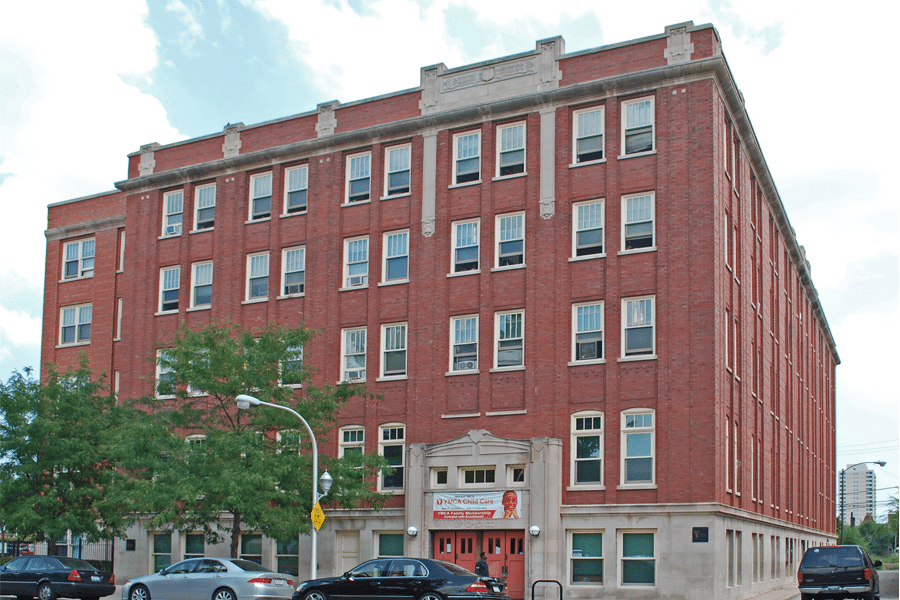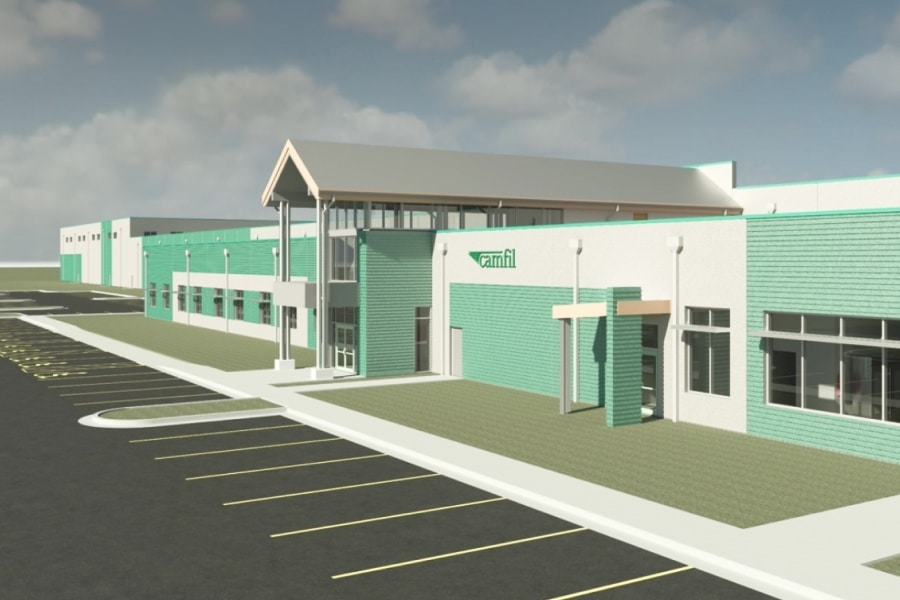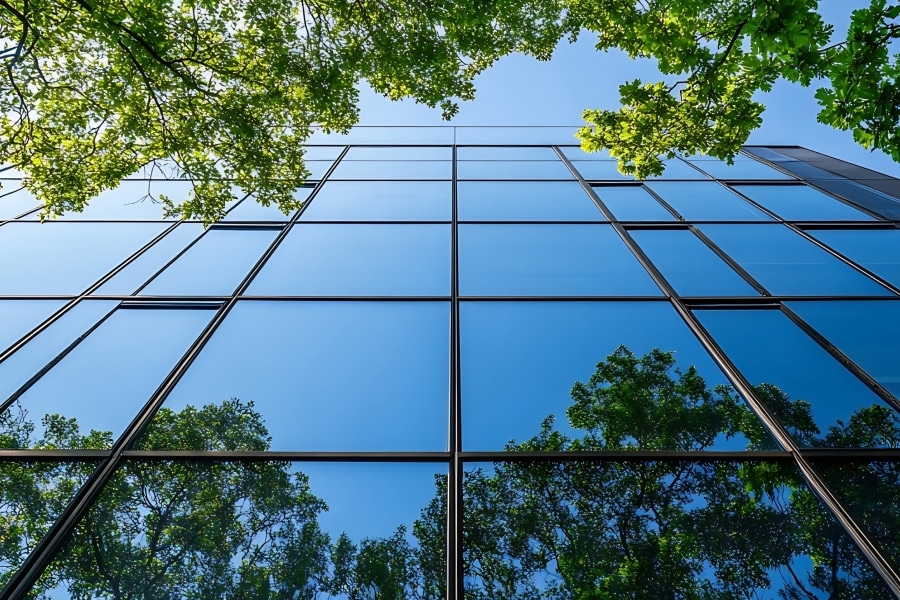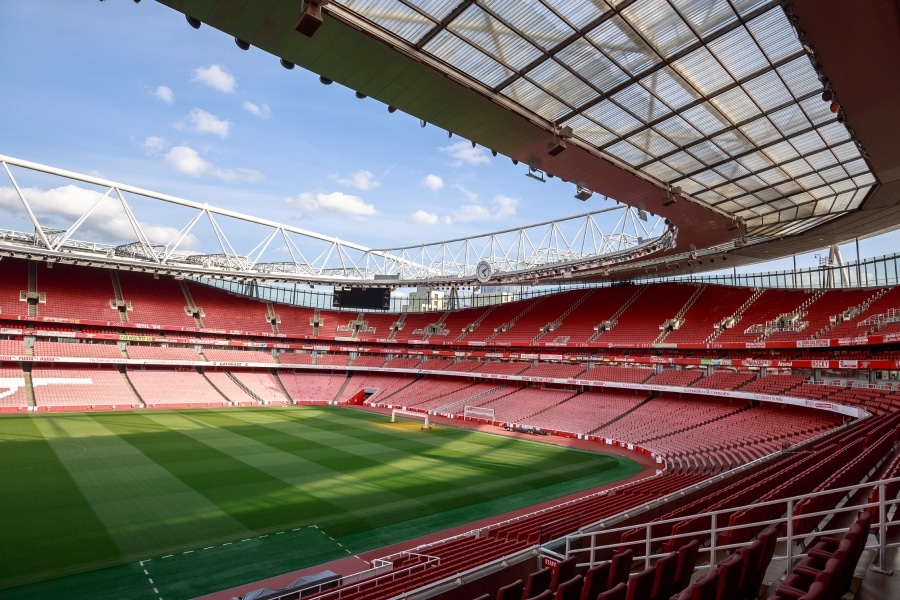The 10,000-square-foot structure that Kingfly Spirits occupies in a historic district area near downtown Pittsburgh has been reincarnated multiple times in its 125-year lifespan, but it took an architectural mastermind gifted in adaptive reuse to transform it to its present state as a craft distillery.
Originally a horse stable circa 1907 on land owned by Mary Schenley, one of the preeminent benefactors in Pittsburgh history, the building also served as a machine shop, taxi depot and home décor shop. There may have been other iterations in its nine lives, but its complete history has not yet been unearthed.
Before dissecting the metamorphosis of Kingfly Spirits and its architectural intrigue, it is essential to understand the building, the neighborhood—and adaptive reuse in general—in a historic context.
Adaptive reuse honoring Pittsburgh’s industrial history
Despite its slightly tawdry name, Pittsburgh’s Strip District neighborhood is not, nor has it ever been, a red-light district, but rather a warehouse district that was the city’s center of industry, from steel and iron factories to mills. Immigrants and eventual icons of industry flocked to the then-polluted neighborhood, such as the HJ Heinz Co. Its earliest buildings date back more than 200 years. At the turn of the past century, the neighborhood transitioned to wholesale produce markets. Pittsburgh’s industrial and architectural history is never far from view in the Strip District, as today the unique area is a fusion of street vendors, churches, restaurants, nightlife and markets, many of which are housed in historic buildings.

“What is exciting about it and important is that in the 19th century, Pittsburgh was the fifth-largest city in the country,” said lead architect Peter Margittai, owner of Margittai Architects, an architectural firm noted for its adaptive reuse projects, including Kingfly Spirits. “At the peak of our population, we had over 600,000 people living within the city; today, there are roughly 300,000 people living within the city.”
Margittai added that Pittsburgh was the epicenter of the Industrial Revolution and generated great wealth. “The Carnegies and Rockefellers had more wealth than all the kings and pharaohs and sheiks, and with great wealth came great architecture. Here you have this really extensive and impressive collection of buildings that had been, over time, underutilized and entirely abandoned; they are just waiting for someone to come along and breathe new life into them. That is what we get to do: as the population is stabilized and growing, it makes for a really unique period of time to be an architect working on these kinds of projects,” he said.
Though Margittai devotes much of his career to adaptive reuse, he cannot say that the preservation movement has gained a strong foothold. And not all buildings are meant to be repurposed. Whether it can be economically advantageous depends on such factors as the structure of the building, the sturdiness of the foundation and, frankly, whether there are tax credits and other incentives to help with the costs.
“The fact of the matter is these buildings that we’re repurposing and restoring cannot be built today,” he said. “We don’t have the materials, the craftsmanship nor the skill. The way the construction industry has moved from a more to a less labor-intensive model, it doesn’t support building these buildings anymore. Once you tear a building down from a certain era, it’s gone forever.”
The Strip District has become popular for developers, which worries Margittai. “It is going to start to lose that character. What I would say is to stop tearing buildings down and start repurposing them,” he said.
Fortunately, Margittai has gotten to do just that with his passion project, Kingfly Spirits.
Linking the past and present
Today, Kingfly Spirits is a craft distillery, cocktail bar, café, live music space and events venue in the heart of “the Strip,” a well-known shopping district in Pittsburgh. When Margittai and his company were brought on board to take a look at the building, it was a furniture consignment store, but it began its existence in 1906 or 1907 as an urban horse livery, a common structure in Pittsburgh.
The owner wanted something that had a lot of historical character, which aligned with Margittai’s goals to celebrate the aspects of the building that made it beautiful, especially the exposed structure on the interior. He also thought it was important that the building tell the story of what it had been, but at the same time, the less that guests could see of the work that was put in, the more successful he would deem the project to be.
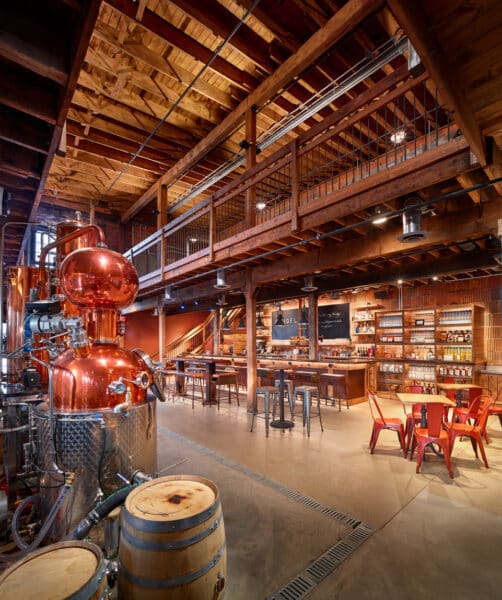
“It’s a very visually dynamic space; you can see the timbers and joists and rafters and purlins that made it very appealing,” he said. “The owner has an affinity for old buildings, and so there is a quality to buildings like this that are really difficult if not impossible to recreate today.”
The new space
Much of Kingfly’s interior had to be rebuilt from the ground up, as there was virtually no plumbing, electrical, floor and a lot of windows were bricked in that had to be removed. Essentially, Margittai had to bring it to code, all the while factoring in the different uses for the new space.
Unsurprisingly, the infrastructure was the biggest challenge. “With a structure that is completely exposed, you need to be thoughtful about the mechanical system that is laid out. The ductwork is tucked in between joists, so we have to measure everything and work with a mechanical contractor to make sure everything is located just right,” he said.
Margittai also got creative with making the space handicap accessible without using ramps. “We figured out a way to slope the floor subtly in multiple directions so we can get access to the grades in both sides, so we sloped the floors in an imperceptible manner,” he explained. “When you’re in that space, the floor is not entirely level.”
The first floor of the space functions as the tasting room while the upstairs is an event venue; the backdrop of the bar is made from the building’s restored structural clay tiles. The showpiece of the space, glass-enclosed in the center, is the spectacular 58-gallon copper still, imported directly from Italy. This was also part of the strategy to comply with the Pennsylvania Liquor Control Board’s requirements for producing bonded (i.e., taxed) vs. nonbonded spirits.
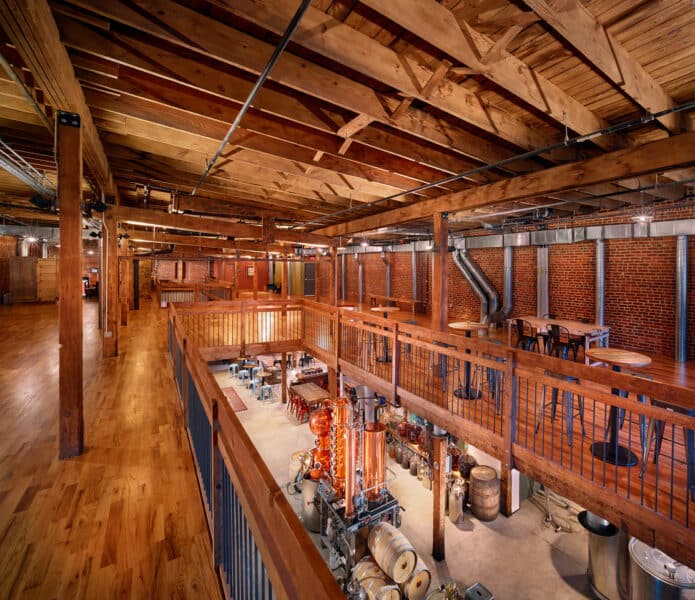
For Margittai, one of the most intriguing aspects of the building—and one of the reasons he is such a strong proponent of adaptive reuse—was the plethora of chestnut wood blanketing the interior, particularly the posts and beams. “That was a very common, ubiquitous material in warehouse building. It was a very strong, solid material for heavy loading. However, starting in the 1920s or 1930s, there was a blight and wiped out the entire source of that material in the US,” he said. Today, you couldn’t find enough American chestnut to even build one building, so if a building replete with chestnut would get torn down, it could never truly be recreated.
Margittai had to restore some of the chestnut, as much of it was debris-laden and discolored from the ravages of time. Because sandblasting was too rough, he sponge-blasted the material to remove the residual material without damaging the wood, enabling its original character to emerge. As chestnut is no longer available, Margittai made the decision to stain the handrails to match the old chestnut for aesthetic reasons.
As the original floor was dirt, topped by rotting wood boards, Margittai poured concrete on the floors and ground it to give it a nice, polished look, adding in exposed aggregate for a nice visual appearance.
The building’s history as a horse stable was confirmed when the construction crew found vintage equestrian gear. As an homage to its history, the gear—harness and bridles—is displayed around a metal track that was installed. The original horse stables have been converted in a lounge area, and where there once was a hay loft, there is now a space for large events on the second floor.
The original footbridge that spanned the space was relocated above the entry vestibule. The open area between the first and second floors accommodating the large copper still calls to mind the original use as a stable and creates an intriguing connection between visitors on the first floor and guests on the second floor.
Creating drama with light was a central part of the project, such as the lighting under the bar and the continuous cove light that is placed at the top of the brick wall, which beams down to the lower level and illuminates the entire wall. “All the light fixtures are tailored nicely to marry harmoniously with the existing structure so it doesn’t look like an afterthought,” he said.
Natural light is in abundance as well. To make the space welcoming, the existing front opening, a garage door, was replaced with a glass entrance that can be opened in the warm weather months; the glass adds to the natural light.
Another light source is from the windows. The original building had three windows centered on the original façade that were bricked in. During the restoration, select masonry openings were reopened and replaced with period-appropriate wood windows, allowing for natural light to blanket the space.
The project was the recipient of the 2019 Pennsylvania Historic Preservation Construction Award for Rehabilitation and a 2021 Merit Award for Architectural Excellence, bestowed by the AIA Pennsylvania chapter as well as a 2022 Certificate of Merit awarded by AIA Pittsburgh. “This building tells a story about what it was and how it was transformed over time,” Margittai said. “I love the history of Pittsburgh, and I love that by working on buildings that are part of that history, I am part of the continuum. That is exciting and rewarding to me.”

